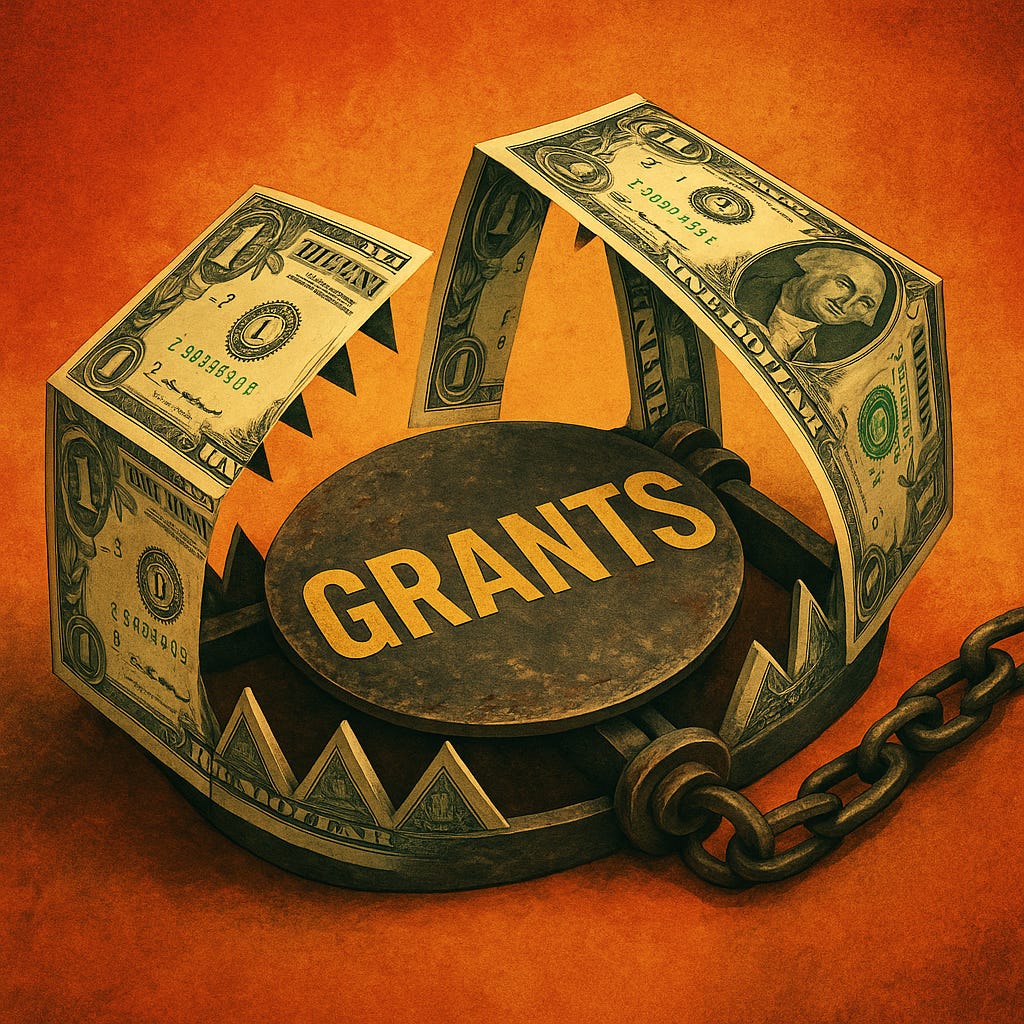The Soft Poison of Free Capital
How grant funding hollows out African startup logic — and what to do instead
When your first money is free, your model often isn’t.
In Africa’s startup ecosystem, non-dilutive capital is framed as a harmless boost. But for many early-stage teams, it erodes the constraints that make a business investable: pricing pressure, customer validation, and cost discipline.
The problem isn’t grants.
It’s what they replace.
Free ≠ Costless
Grants are pitched as “non-dilutive,” but they often dilute something more fundamental: strategic focus.
Founders start building for donor KPIs instead of market demand.
Pilots replace pricing experiments.
“Reach” metrics stand in for revenue and retention.
A fintech funded to serve rural farmers might hit impressive coverage numbers — but never prove whether farmers will pay, or return, or grow.
Burn Without the Fire
Here’s the pattern:
A $200k grant lands
Team size doubles
Burn rate jumps from $8k to $25k
Revenue doesn’t move
With no pressure to generate cash, discipline disappears. Startups scale complexity instead of scaling truth.
Subsidized users look great in reports — until the grant ends and they vanish.
By Series A, the business is often overbuilt and underperforming.
Misalignment Compounds
The real damage comes from structural misalignment:
Grant Logic Venture Logic 12-month cycles 5–7 year scale paths “People trained” Revenue per user Outreach CAC control Coverage Retention
Donor metrics reward activity, not efficiency.
Donor timelines reward bursts, not compounding.
Grants teach founders how to win renewals — not customers.
The Investor Read
Investors don’t reject grants.
They reject dependency.
If you say:
“We’ve raised $500k in non-dilutive funding…”
You’d better follow with:
What did it unlock?
What changed commercially?
What happens when the money stops?
What smart investors look for:
Commercial traction beneath the subsidy
Cost control despite free money
A real plan to graduate to revenue or equity
If the founder can’t explain how the model evolves post-grant, it’s a red flag — not a success story.
This is the logic behind effective blended finance — using catalytic capital to unlock real investment, not to mask an unscalable model.
See: Blended Capital Models — Structuring for Scale, Not Subsidy
Grant-Funded ≠ Grant-Built
The strongest teams use grants as a catalyst, not a crutch.
Use grants to fund:
✅ R&D
✅ Regulatory groundwork
✅ Early distribution testing
Avoid using grants to:
🚫 Inflate team size
🚫 Sustain unproven models
🚫 Chase optics over outcomes
If the business only works with continuous donor support, it’s not a business.
It’s a subsidised program with a logo.
When the Model Fails
Once grants become structural, startup logic collapses.
You hire for compliance, not growth.
You optimize for grant renewals, not product metrics.
You survive inside the program — but not outside it.
That’s not scale. That’s dependence.
What to Ask — and What to Hear
👇 Founders:
“How does this grant move you toward a working business model?”
✅ Ideal answer:
“It derisks [a key blocker] over [defined time], so we can validate [specific commercial metric] and raise [next capital type].”
No vague goals.
No open-ended dependence.
Every dollar must move the business closer to revenue.
👇 Investors:
“Is this founder graduating — or surviving?”
✅ Check for:
Retention after subsidies
Pricing clarity
Lean ops despite the funding
If the grant vanished today, would anything still work?
If not, walk away.
👇 Donors:
“Are we building fundable companies — or just funding activity?”
✅ Better metrics:
Revenue generated per dollar of grant
Commercial follow-on funding
Team constraints, not bloat
Fund experiments with endgames.
Not operations with no off-ramp.
One Rule
Grants should clear the path — not become the path.
If your model collapses when the money ends, it was never designed to stand.
Want more?
I’m working on a teardown of African blended capital structures and a founder toolkit: “Survive Your First Grant — Without Killing Your Business.”
Subscribe to get early access when it drops.


